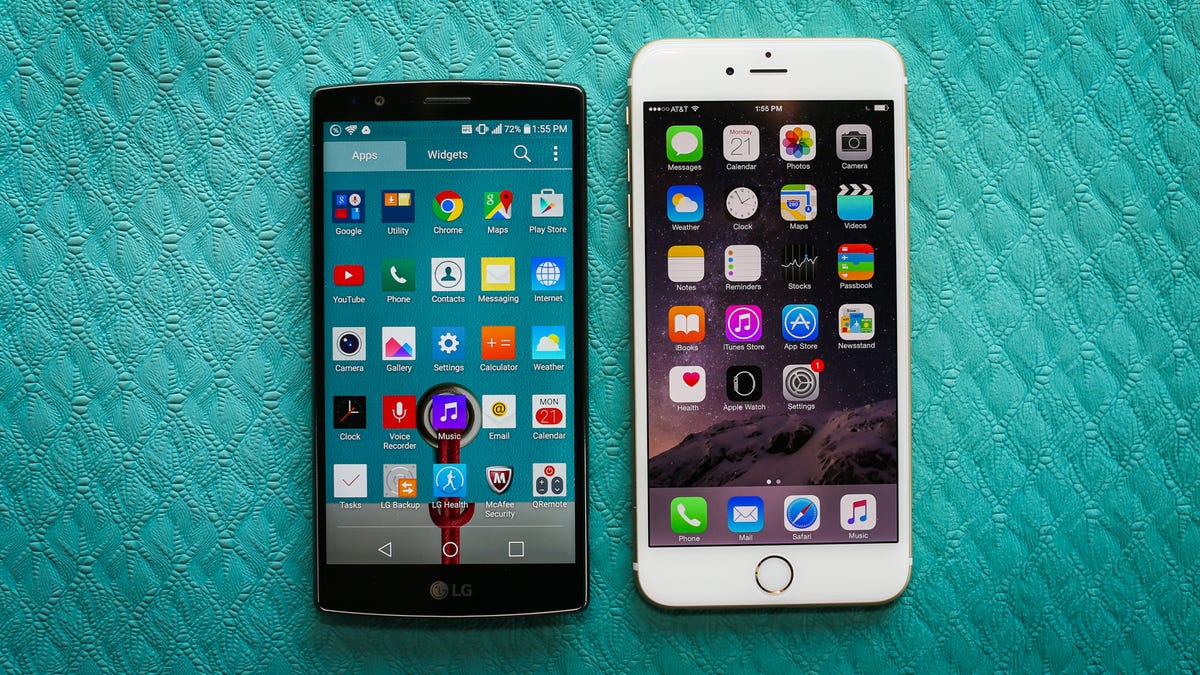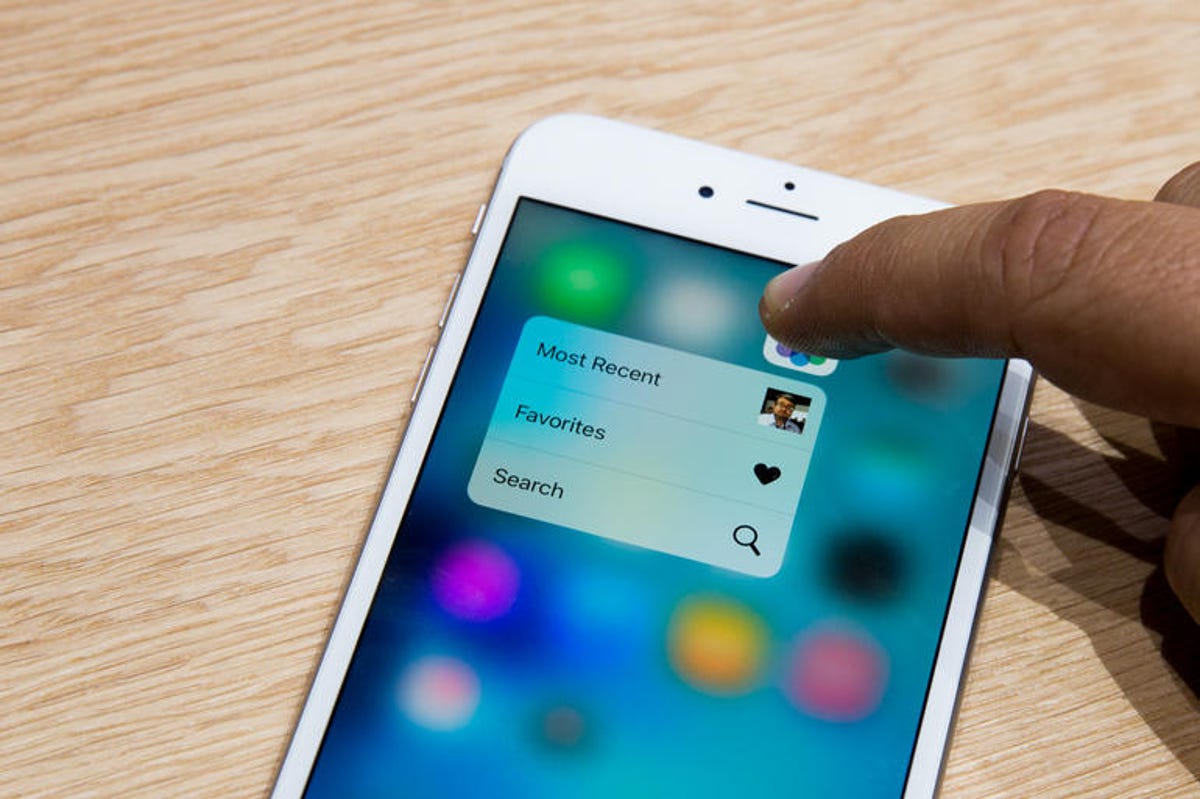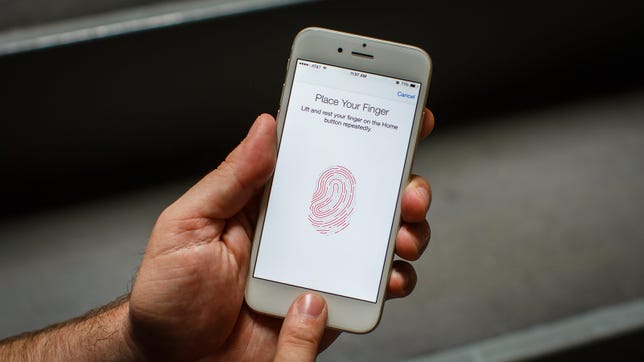

Now playing:
Watch this:
Apple looks to bring wireless ‘Air Buds’ to the iPhone…
5:38
 Enlarge Image
Enlarge ImageCNET
When Apple co-founder Steve Jobs introduced the iPhone in 2007, he touted the elegance of its design, particularly how simple it was to navigate the smartphone from a single point.
“On the front, there’s only one button,” Jobs said. “We call it the home button. Takes you home from wherever you are. And that’s it.”
That was a radical design, given at the time that Nokia’s and BlackBerry’s top-selling smartphones required pressing lots of buttons and keys. Eight years and nine generations of the iPhone later, Apple’s round home button has remained a focal point for navigating the smartphone and a design feature that’s helped set the Cupertino, California, company apart from competitors.
But the 4.7-inch iPhone 6S , which goes on sale Friday alongside its larger iPhone 6S Plus sibling, may mark the beginning of the end of the home button. Some of the new functionality in the iPhone 6S — including the pressure-sensitive touchscreen and expanded use of the voice-activated Siri virtual assistant — may be laying the groundwork for a radical shift in design by diminishing the need for a physical home button.
Why kill such a visually distinctive feature? For one, eliminating the home button would give Apple more screen real estate to play with, allowing it to pack a larger display on a smaller body. That would translate into a device that you can still hold and navigate using one hand even if the screen gets bigger.
A buttonless iPhone also would fall in line with Apple’s design preference for a clean look.


Josh Miller/CNET
That’s not to say Apple is certain to throw out the physical home button with next year’s iPhone 7 — or even later models. The world’s second-largest smartphone maker (after Samsung Electronics) gets a lot of recognition value out of its unique home button. Also, several pieces would have to fall into place before Apple would move away from its home button, including the integration of the fingerprint sensor into the screen and the decision to create an even larger display.
Even though the iPhone dominates high-end smartphone sales, Apple needs to keep shaking things up to maintain consumer interest. The company introduced a new Apple TV streaming-media box and a larger iPad Pro tablet earlier this month, but the iPhone is the money spinner, generating more than two-thirds of Apple’s revenue. As of March, Apple had sold 700 million iPhones. The removal of the home button would mark a major transformation for such a significant product.
“It would certainly be a radical change to the way iPhones look,” said Jan Dawson, an analyst at Jackdaw Research. “But Apple isn’t averse to making these big changes either.”
An Apple spokeswoman declined to comment.
15 things you need to know about the new iPhone 6S






+13 more
A buttonless button
Apple has made just a few design changes in its newest iPhone. The screen sizes for its regular and Plus models remain 4.7 inches and 5.5 inches, respectively, and the shape and weight are generally the same. One notable addition with this year’s models is 3D Touch, pressure-sensitive technology that responds differently depending on how much force you apply to the screen.
“3D Touch is impressive,” said Avi Greengart, an analyst who covers consumer tech for research firm Current Analysis. “It’s a big change in touchscreen interaction, and it greatly speeds interactions that might otherwise require multiple steps.”


James Martin/CNET
At first, it seems like a magic trick: a screen that senses how hard you’re pushing and gently pushes back with haptic feedback, the term used to describe the tiny vibration the device makes in response. It’s the same technology found in the Apple Watch (where it’s called “Force Touch”), and to some degree in the trackpads on Apple’s newest MacBook notebooks, which use haptic feedback technology to simulate the feel of clicking down on the pads.
This technology has ended up feeling ordinary, not extraordinary. That’s by design. In both the smartwatch and laptop, it’s a way to create an input. On the iPhone 6S, it seems destined to create helpful shortcuts.
The Apple Watch uses the technology to bypass the need for extra buttons. Apple’s MacBooks use Force Touch to eliminate the physical click mechanism. The same could hold true for the iPhone and its home button.
Who needs a button when you have Siri?
Siri, the virtual voice assistant Apple added to the iPhone in 2011 in its 4S model, kicked off a navigation trend that prompted the creation of rivals, including Microsoft’s Cortana, Google Now and Amazon’s Alexa. Now Apple is playing catch-up to its rivals with the introduction of functionality called always-on listening. Rather than hold down the home button to activate Siri, iPhone users can now just say “Hey, Siri” to summon the software to run a search or play a song with a spoken command. (This already works on earlier iPhones, but only while they’re charging.)
Besides running hands-free search, Siri is getting better at doing things that would otherwise take several clicks, such as setting alarms or adding reminders. That hands-free option is convenient when you’re tied up with another task such as driving or cooking.
“Over time, user interaction models change,” Greengart said. “Consumers might get used to asking Siri for help.”
Playing with screen size
One of the best design reasons to ditch the home button may be screen size. The current iPhones have bigger screens than the 3.5-inch and 4-inch screens of past models, but they’re also longer and wider than smartphone rivals. Samsung’s Galaxy Note 5 has a 5.7-inch screen, compared with Apple’s 5.5-inch display in its Plus models. LG’s G4 features the same 5.5-inch display but has a smaller body thanks to its thin frame.
Apple’s sleek iPhone 6S features 3D Touch (pictures)






+9 more
The iPhone 6S, meanwhile, has a 4.7-inch display. But rival phones with a similar chassis, like Google’s Nexus 5, have managed to fit in a 5-inch screen.
A smaller iPhone 7 that fits in more pockets with the same-size screen could make for a compelling sales pitch, especially as Apple continues to fight to win customers away from Samsung and LG, as well as from a crop of lower-end players that includes Motorola and China’s Xiaomi.
The future of Touch ID
The biggest case against removing the home button is Apple’s Touch ID, the fingerprint security sensor it introduced in the iPhone 5S in 2013 to bypass typing in a password. The Touch ID sensor is built into the home button today.

 Enlarge Image
Enlarge ImageJosh Miller/CNET
But that’s only a temporary limitation. Apple in February filed a patent application to move the fingerprint sensor beneath the glass of the touchscreen, eliminating the need for a home button. Synaptics, which makes the fingerprint sensors for smartphone vendors such as Samsung (but not Apple), is also working on putting a sensor beneath the display.
Synaptics CEO Rick Bergman said in an interview last year that putting the reader under the glass of the touchscreen is the “holy grail” of fingerprint sensors but is complicated by the glass obscuring the scan.
Synaptics, however, expects to have a prototype version of the under-touchscreen sensor by early 2017, Ritu Favre, senior vice president in charge of the company’s biometric products division, said Tuesday.
The need for tech advancements may not be the only reason the home button is still there, though. The reason may be simply that it’s not yet possible to bypass the functionality that can be packed into that little round circle: It’s versatile, letting you get out of an app, launch Siri, bring up other apps and unlock your phone with the touch of your finger.
It’s also familiar and comfortable to users. No one complains about having a home button.
“You can never truly get lost, as the home button is always there for you to exit whatever you’re in and reorient yourself,” Greengart said.
Updated, 8:08 a.m. PT: More comment from Synaptics has been added.



